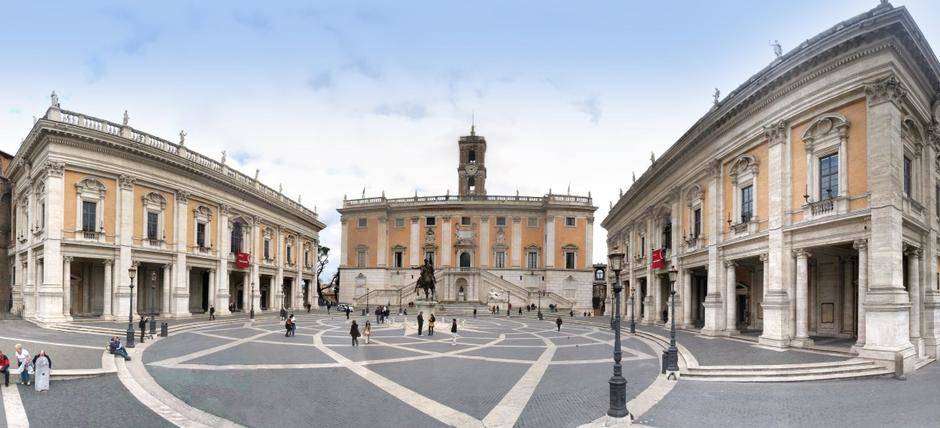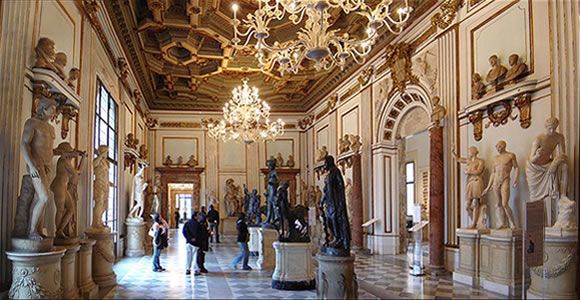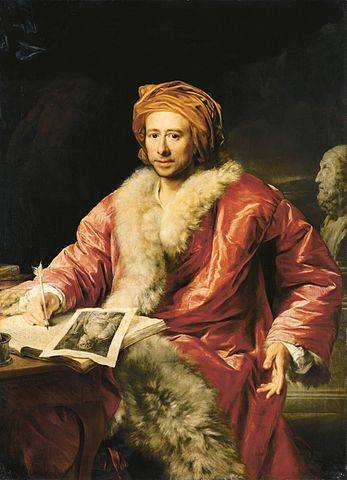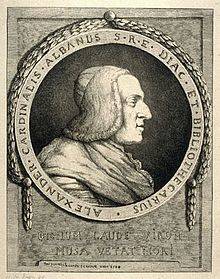World's Oldest Public Museum: Rome's Capitoline
ROME -- Italy is celebrating the inauguration nearly three centuries ago of Italy's oldest public museum, the Capitoline, which was founded and funded with income from, of all things, a public lottery. The lottery was held in Palazzo Montecitorio, which today houses the Italian Chamber of Deputies. That earliest museum was described as "pagan" since it was not part of Church property, albeit promoted by the Church.
The collection of antiquities housed in it was the one that inspired Johann Joachim Winckelmann to write a book, now a classic called "The History of Ancient Art," published in Dresden in 1764. Immediately influential throughout Europe, in it he literally invented the study of archaeology. And because the Prussian-born Winckelmann was born on Dec. 9, 1717, the third centennary of his birth has provided an occasion to celebrate both museum and art historian with one of the most compelling exhibitions in recent Roman history.
The son of a shoemaker and grandson of a wealthy manager, Winckelmann had studied classics and was living and working as a librarian in sophisticated Dresden, where the sight of antiquities, brought there from Herculaneum, enraptured him. In 1755, at age 38 years, Winckelmann was finally able to visit Italy while accompanying a Prussian nobleman on his Grand Tour. In Rome, the Prussian king Augustus III suggested he stay on, with stipend, so as to send them reports of excavation novelties which the Prussian royals hoped to acquire.
At that time, atop the Capitoline Hill were the horseshoe-shaped trio of buildings, whose facades were designed by Michelangelo in the 1540s but completed only later. To the right is the Palazzo dei Conservatori; to the left, the Palazzo Nuovo, a building completed in 1671 to house first a textile and, later, an agriculture guild, which adorned the building with 46 ancient sculptures. On Dec. 27, 1733, a decree founded the museum in the Palazzo Nuovo with the express purpose of promoting "the magnificence and splendor of Rome."
The building required restoration, funded by the lotteries held in the piazza and in Piazza Montecitorio. Then Cardinal Albani's important collection of 400 or so sculptures and epigraphs were purchased, thanks once more to the lottery funds that also paid for renovation of the building to make it suitable for display. In mid-1735 the Capitoline Museum was opened to the public, the first public art museum in the world. A centerpiece of the collection was a life-sized Venus of white marble, a copy from the original by Praxiteles, discovered on Rome's Esquiline Hill in 1667.
Enchanted by Rome, Winckelmann was able to see and to study hundreds of ancient sculptures in private collections and in the young, public Capitoline Museum, where he lingered day after day. He became a protegé of the influential Cardinal Alessandro Albani, a prominent collector of antiquities and patron of the arts, and then Superintendent of Antiquities for the Vatican. Soon he realized that in many cases the attributions of statues were inaccurate. The studies he made became the basis of his "The History of Ancient Art," still recognized as the foundation of archaeological studies.
The exhibition "The Treasure of Antiquity, Winckelmann and the Capitoline Museum" is scattered throughout both buildings, the Palazzo dei Conservatori and the recently renovated Palazzo Nuovo, which are connected by a long underground passage whose walls are a treasure trove of ancient epigraphy. The classical statuary in the three magnificent halls of the latter's piano nobile are arranged much as Winkelmann himself would have seen them.
Among the delights on view: Francesco Panini's painting of Palazzo Montecitorio, with the lottery that bankrolled the birth of the Capitoline Museum underway.The exhibition continues through Sunday, March 26.







































i-Italy
Facebook
Google+
This work may not be reproduced, in whole or in part, without prior written permission.
Questo lavoro non può essere riprodotto, in tutto o in parte, senza permesso scritto.